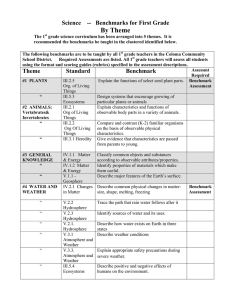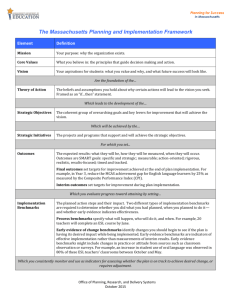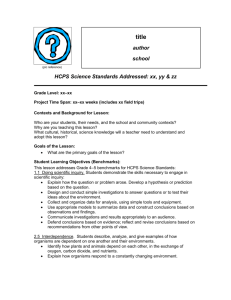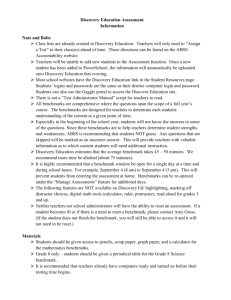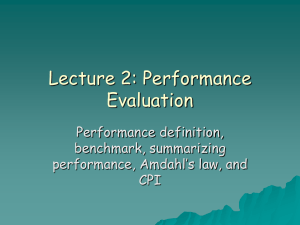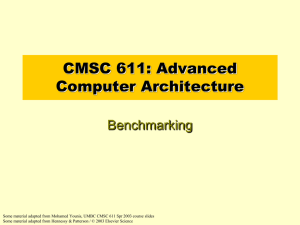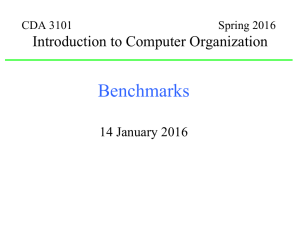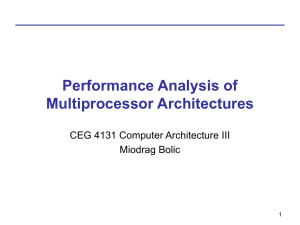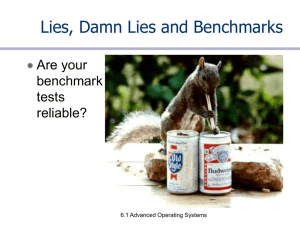Verdana Bold 30
advertisement
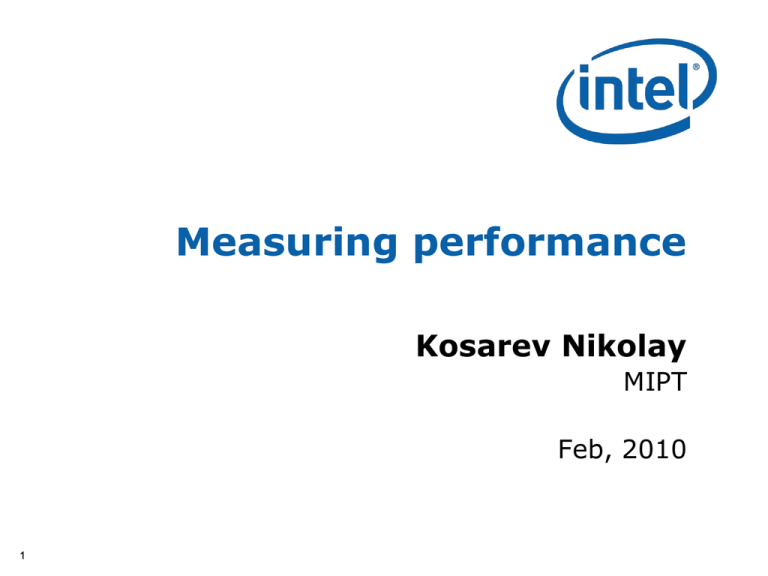
Measuring performance Kosarev Nikolay MIPT Feb, 2010 1 Agenda • Performance measures • Benchmarks • Summarizing results 2 Performance measures Time to perform an individual operation • The first metric. Used if most instructions take the same execution time. Instruction mix • Idea is to categorize all instructions into classes by cycles required to execute an instruction. Average instruction execution time is calculated (IPC if measured in cycles). • Gibson instruction mix [1970]. Proposed weights for a set of predefined instruction classes (based on programs running on IBM 704 and 650) • Depends on the program executed, instruction set. Could be optimized by compiler. Ignores major performance impacts (memory hierarchy etc.) 3 Performance measures (cont.) MIPS (millions of instructions per second) • Depends on instruction set (the heart of the differences between RISC and CISC). • Relative MIPS. DEC VAX-11/780 (1 MIPS computer, reference machine). Relative MIPS of machine M for predefined benchmark: MFLOPS (millions of floating-point operations per second) • Metric for supercomputers, tries but not corrects the primary MIPS shortcoming 4 Performance measures (cont.) Execution time • Ultimate measure of performance for a given application, consistent across systems. • Total execution time (elapsed time). Includes system-overhead effects (I/O operation, memory paging, time-sharing load, etc). • CPU time. Time spent for execution of application only by microprocessor. • Better to report both measures for the end user. 5 Benchmarks Program kernels • Small programs extracted from real applications. E.g. Livermore Fortran Kernels (LFK) [1986]. • Don’t stress memory hierarchy in a realistic fashion, ignore operating system. Toy programs • Real applications but too small to characterize programs that are likely to be executed by the users of a system. E.g. quicksort. Synthetic benchmarks • Artificial programs, try to match profile and behavior of real application. E.g. Whetstone [1976], Dhrystone [1984]. • Ignore interactions between instructions (due to new ordering) that lead to pipeline stalls, change of memory locality. 6 Benchmarks (cont.) SPEC • SPEC (Standard Performance Evaluation Corporation) • Benchmark suites consist of real programs modified to be portable and to minimize the effect of I/O activities on performance • 5 SPEC generations: SPEC89, SPEC92, SPEC95, SPEC2000 and SPEC2006 (used to measure desktop and server CPU performance) • Benchmarks organized in two suites: CINT and CFP • 2 derived metrics: SPECratio and SPECrate • SPECSFS, SPECWeb (file server and web server benchmarks) measure performance of I/O activities (from disk or network traffic) as well as the CPU 7 Benchmarks (cont.) 8 Benchmarks (cont.) SPECratio is a speed metric • How fast a computer can complete single task • Execution time normalized to a reference computer. Formula: • It measures how many times faster than a reference machine one system can perform a task • Reference machine used for SPEC CPU2000/SPEC CPU2006 is Sun UltraSPARC II system at 296MHz • Choice of the reference computer is irrelevant in performance comparisons. 9 Benchmarks (cont.) SPECrate is a throughput metric • Measures how many tasks the system completes within an arbitrary time interval • Measured elapsed time from when all copies of one benchmark are launched simultaneously until the last copy finishes • Each benchmark measured independently • User is free to choose # of benchmark copies to run in order to maximize performance • Formula Reference factor – normalization factor; benchmark duration is normalized to standard job length (benchmark with the longest SPEC reference time). Unit time – used to convert to unit of time more appropriate for work (e.g. week) 10

